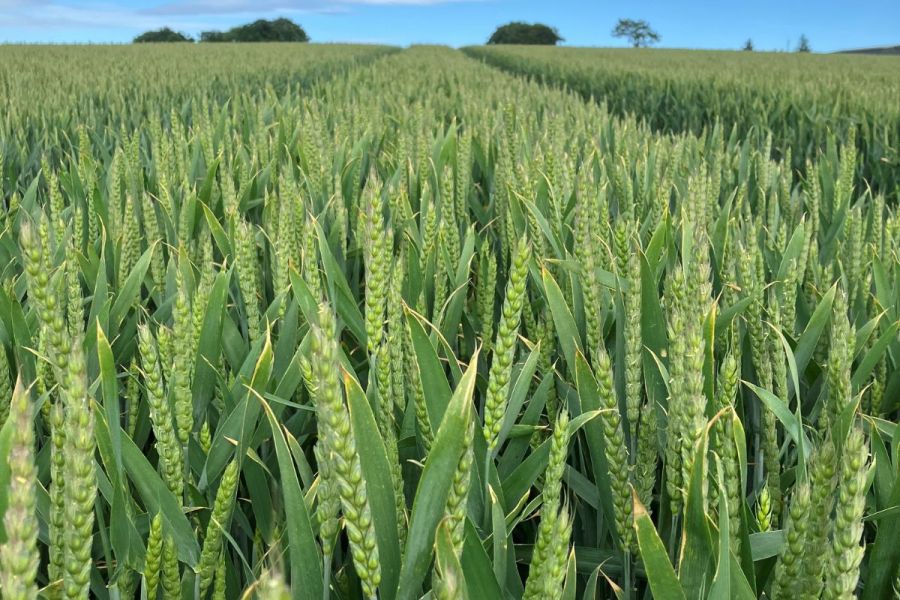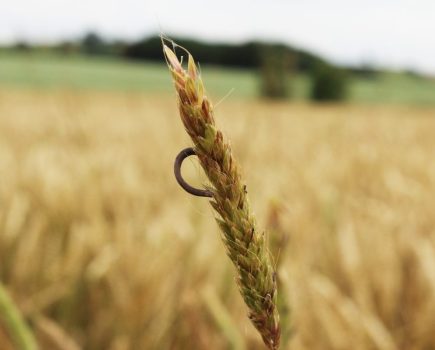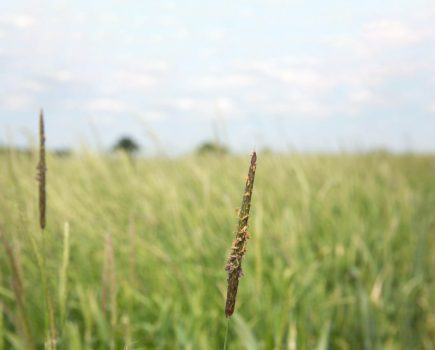As growers grapple with trying to balance rotations, a new initiative from Elsoms is claimed to help them do just that. CPM finds out more.
“Rotations aren’t a new concept – but they are the most valuable asset farmers have.”
By Charlotte Cunningham
While rotations have always been the mainstay of any arable business, their demands have somewhat changed dramatically over recent years.
Now more than ever, growers are having to juggle environmental challenges as well as political and legislative changes on a frequent basis – all while trying to stay in the green – meaning that thinking about anything more than the current rotation can feel somewhat of a challenge, says ProCam seed manager Lee Harker.
“Rotations aren’t rocket science, but I think the value of the long-term planning of a rotation, which also accommodates change when the circumstances push for it, has become a little forgotten during recent years.”
The importance of the flexibility and ability of both farmers and rotations to be able to adapt the plan has been heightened this season, and although it’s undoubtedly been a devastating year for some, being able to respond to these challenges where possible can bring benefits, continues Lee.
“If we look at this year, for example, many winter cropping plans changed to spring crops. In a situation like this, if spring crops were sown too late – and therefore likely to result in a later harvest – something like a cover crop might be a more sensible option than trying to push in a spring crop too late, which then compromises successful establishment of the following winter crop.
This requires a mindset change too, he continues: “Just because a cover crop isn’t a cash crop doesn’t mean it doesn’t have value and it can bring a wealth of benefits to the soil, which will be advantageous to future rotations. That said, with the current SFI options, there is financial potential there too.”
When it comes to planning and preparing rotations, every farm will have a different ideal formulation and therefore knowing your farm well and working closely with an agronomist is vital, he adds. “Understanding the soils and even individual fields is crucial for when you do have to respond and change your plan.”
With this in mind, enters Responsive Rotations – a new initiative from Elsoms which aims to support farmers to adapt their time and land to the changing environmental, political and economic landscape to ensure maximum potential for their arable rotations, explains Toby Reich, head of agricultural sales at Elsoms.
So why is it necessary? “Our sector and industry are under pressure – demands from a changing environment, change in policy and changing economy. This all affects profitability right down the supply chain.”
Looking more closely at these pressures, Toby cites climate change, the ban on neonicotinoids, increased weed resistance, the energy price crisis and global grain price volatility as some of the recent challenges, so where do rotations fit in?
“Rotations aren’t a new concept – but they are the most valuable asset farmers have. However, we feel they haven’t been prioritised as much as they could have been during the past decade.
“So, what we’re aiming to dig into with this new initiative, is how to manipulate rotational planning and unlock the potential within rotations in order to be responsive and react in a positive way.”
In terms of how exactly this new initiative will support farmers, according to Toby, Responsive Rotations is based around combining three key foundations: a data-led approach, cross-crop expertise, and an extensive product portfolio which encompasses everything from typical combinable crops to SFI-suitable mixes.
“Making a successful change to something comes down to having access to three things – the people, the process and the technology to make it happen,” explains Toby.
“Applying this to rotational planning, you have to make sure you have the right people who have the knowledge and expertise to advise, the process to collect data and disseminate that information to ensure those decisions are scientifically proven, and then the technology to actually affect that change – in this case, varieties with the right traits and resistances to enable farmers to overcome some of the biggest challenges in agriculture at the moment.”
Delving deeper into the technology, any change is going to be founded in breeding, continues Toby. “Breeding is the first point in any new variety or species and therefore it’s down to the breeder to respond to any changes required across the market, which is where we feel we can play an important role.
Looking at how they’ve already responded to current challenges, Toby cites bringing soyabeans to UK markets, which are earlier planting and more suitable for UK production, as an example of responding to the changing demand for homegrown protein sources.
In terms of more typical arable crops, he says new winter wheat variety Bamford has been a breakthrough for the company, and Lee adds that it’s a ‘top variety’ which will tick a lot of boxes for growers.
Having varieties which allow growers to be flexible with their plans is vital, says Agrii northern Scotland agronomist Charlie Catto, who has also been impressed with Bamford’s performance. “It does really well in both the early and later drilling slot – perfect for growers who want to get their crops down early, but also have flexibility if conditions aren’t right. It’s stood up really well despite a very wet year.”
The wet year has also brought additional septoria pressure, however from what he’s seen, Charlie says Bamford has continued to be resilient. “We’ve had a very wet year and septoria pressure has been high. But having seen Bamford in both trials and in seed crops, it’s clear its septoria score is a very strong 6.7 – I would actually say it performs higher than that.
“Since we lost chlorothalonil (CTL), septoria control has been a challenge. We’ve had new chemistry come into the market, but we’re still not achieving the control we’d like, so have to utilise a variety’s resistance strengths in a way we didn’t have just three or five years ago. To be able to use Bamford like this will support the production of soft wheats across the region while enabling growers to demonstrate good IPM.”
He continues: “The big word at the moment is sustainability – with lots of people looking for a variety where they can afford to target inputs more strategically, but still get the yield and quality, and Bamford ticks all of these boxes.
“It reminds me of when Skyscraper first came along, and it looks like it could be the new dual-purpose variety.”
Looking at Bamford in more detail, some of its standout characteristics include being the highest untreated Group 3 on the market at 92% and outstanding performance where sown as both a first and second wheat, explains Toby. “This is complemented by its strong disease resistance profile and it’s the most marketable variety for the farmer – it can go into feed, it can be distilled, it can go into biscuit making, it’s got the contract for export.”
This has made it popular with growers already, gleaning a 7.4% market share of areas entered in 2024, which is predicted to rise to 15% in 2025.
For those challenged by catchy weather and suboptimal conditions around typical drilling times, Group 4 soft variety Blackstone maintains good performance across a wide weather window, notes Toby. “It’s sowing window is from September to mid-February which means it’s responding to that pressure and allowing farmers to have more bites at the cherry when required in terms of getting crops in the ground.”
Other examples of advancements in the breeding programme include more diversity in genetics using the Genius breeding system and hybridisation of crops such as rye to create low input, high output second cereal options, he says.
“Then we take a year like this one, and I also can’t stress enough the importance of having solid winter and spring options,” adds Toby. “If growers find themselves in a scenario where it’s a struggle to get winter crops in the ground again, then they can explore other good options like spring linseed, barley, maize or energy beet.”
But it’s not just about cash crops – cover crops and environmental options are having a resurgence at the moment, largely due to the rollout of the SFI scheme, he points out. “We’ve introduced new species and principles through our breeding partners and now supply into the market a selection of both straights and mixtures, needed to meet the environmental seed rules and regulations demand for SFI.”
With more than 30 years’ experience in cover cropping, Nigel Ford from specialist wholesale seed merchant All Things Rural, says to get the best from them, careful planning and management is required. “While some growers have been incorporating cover cropping for a number of years, the reality is, many are being pushed down this route due to a combination of less chemistry available, changing markets and policy forcing them to look at other options. We then have SFI adding to this, it’s a bit like the Wild West at the moment,” laughs Nigel.
“The challenge with this is that in general, we as an industry don’t have that depth of knowledge and experience in terms of what to do, how to do it and when to do it – so many are still going through a pain barrier with cover crops at the moment, highlighting the need for informed, data-led advice.”
This is the beauty of Responsive Rotations, he adds. “It’s making growers think about what they’re doing and why they’re doing it to work towards the outcome they want – and that’s the most important thing with cover crops. Getting cover cropping benefits are a long-term game and so it’s important to plan and prepare for that.”
Toby continues: “We have a team of breeders on hand and available to talk to internally and externally – no one knows these varieties like they do, and it’s that knowledge which is going to help growers get the best from their rotations from sowing right through to marketing.”
Going forward, while growers are likely to be slightly bruised as Harvest 2024 draws to a close and thoughts turn to next season’s crops, Lee says the ethos behind Responsive Rotations has never been more important.
“We always say anecdotally that farmers farm for last year – so this year everyone is likely to be getting wheat in during September, for example. But I think something like Responsive Rotations will help growers refocus their mindset to look both at the longer-term strategy and be able to make an educated choice if plans have to adjust in response to change throughout the season.”
Toby concludes: “It’s more than just sowing a crop. Responsive Rotations is all about taking an holistic overview of the whole production system, right way through to marketing, while using the best advice, the latest data and the most cutting-edge breeding to develop sustainable rotations which can truly withstand the challenges of modern-day agriculture.”
This article was taken from the latest issue of CPM. Read the article in full here.
For more articles like this, subscribe here.
Sign up for Crop Production Magazine’s FREE e-newsletter here.




